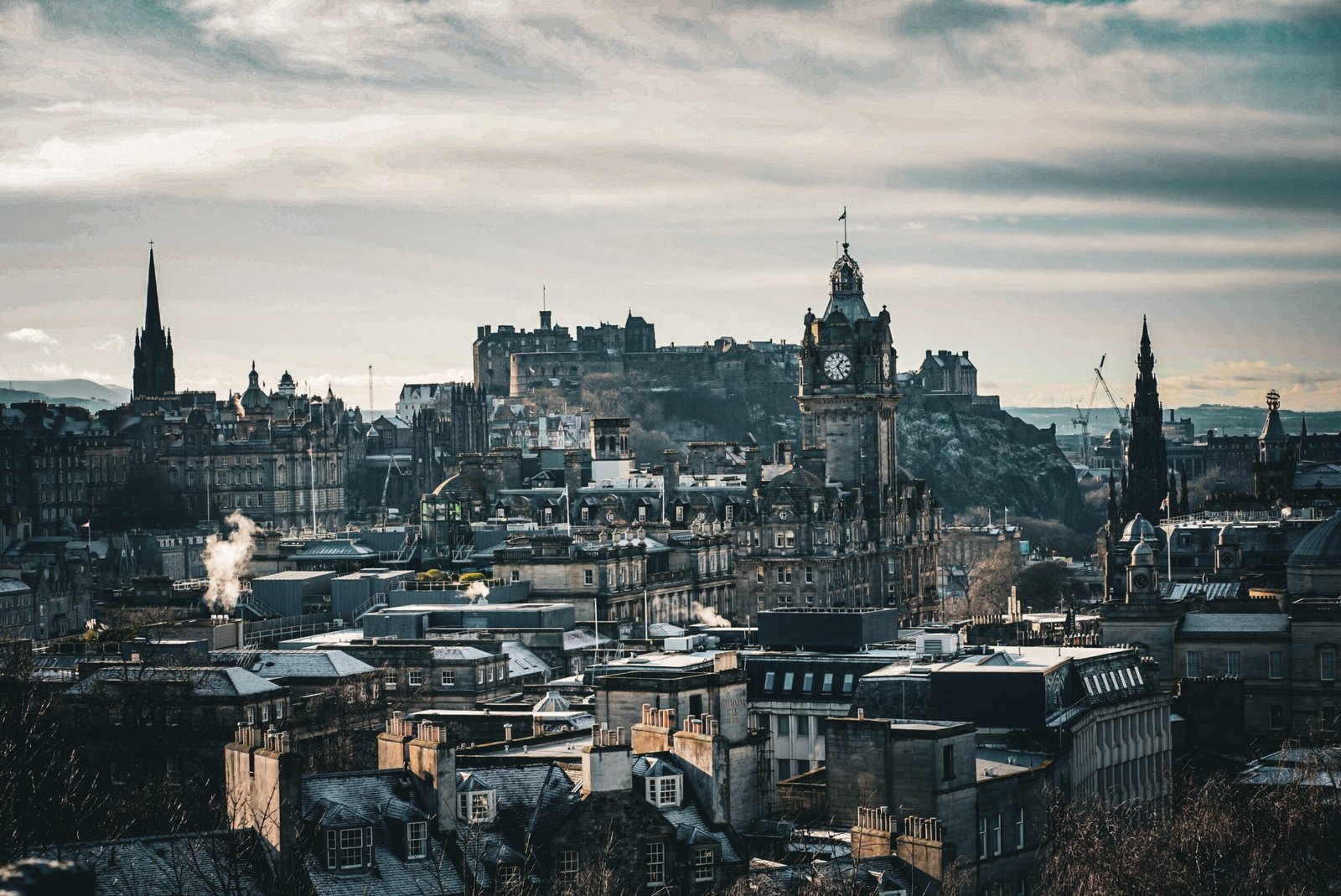
Scotland is a place of timeless allure, where ancient castles cling to rugged coastlines and sweeping lochs reflect skyward. Many travelers are captivated by the idea of exploring this dramatic land, yet they often wonder: When is the best time to visit Scotland? The truth is, it depends entirely on what you wish to see and do. Each season in this captivating country has its own special magic—from summers filled with festivals to tranquil winters that blanket the Highlands in snow. If you plan carefully and choose your timing wisely, you’ll discover that Scotland can be the perfect getaway at any point in the year.
In this guide, we’ll explore Scotland’s seasons in detail, so you can figure out the best visit time in Scotland that aligns with your interests. Perhaps you’re an avid festival-goer looking to catch the cultural frenzy in Edinburgh (sometimes colloquially referred to as “Edionburgh,” though that’s a common misspelling), or maybe you’re a solitude-seeker eager to wander through silent glens under a soft dusting of snow. Whatever your travel goals, this article will help you pick the best visit time in Edionburgh and beyond, ensuring you see Scotland at its most enchanting.
High Season (June to August)
If you’re someone who thrives on bustling energy, lively festivals, and extended daylight hours, then the high season spanning June through August could be the best time to visit Scotland for you. During these summer months, the weather is typically mild, with temperatures often hovering between 60°F to 70°F. Days stretch late into the evening, providing ample opportunity to explore castles, hike scenic trails, and even embark on island-hopping adventures off the western coast.
Edinburgh’s Summer Festivals
Edinburgh transforms into a cultural hotspot in the summer, a factor that tempts many visitors to mark this period as the best visit time in Edionburgh. The city hosts the world-renowned Edinburgh Festival Fringe, a colossal event that spans several weeks and features thousands of shows in venues across town. From stand-up comedy to experimental theater, you’ll find every kind of performance here, turning the streets into a vibrant stage for creatives from across the globe. Alongside the Fringe, the Edinburgh Art Festival showcases captivating exhibitions in galleries and public spaces, adding a visual arts dimension to the city’s summer flair.
If you’re more inclined toward classical music or grand spectacle, the Royal Edinburgh Military Tattoo is a must-see. Staged on the esplanade of Edinburgh Castle, this event brings together military bands, bagpipe performances, and fireworks set against a dramatic fortress backdrop. It’s a thrilling showcase of Scottish heritage and military precision, leaving spectators in awe night after night.
Highland Games and Outdoor Adventures
June to August is also prime time for the Highland Games, a series of culturally rich events rooted in Scottish tradition. Towns across the country come alive with bagpipers, Highland dancers, and kilted athletes participating in events like the caber toss and hammer throw. Traveling through the Highlands to attend one of these gatherings isn’t just about watching unique sports; it’s also an opportunity to witness the proud display of Scottish identity.
If you’d rather explore the landscape, you’re in luck: the long days mean more hours to traverse mountain trails or wander along scenic lochs. The Isle of Skye, in particular, is a favorite summer destination. Home to the imposing Cuillin mountains and the famous Fairy Pools, Skye can get crowded this time of year, so booking accommodations in advance is essential. Nonetheless, for many people, the peak season remains the best time to visit Scotland because everything is open and there’s a festival-like atmosphere in the air.
Crowds and Costs
The flip side to all these perks is that you’ll be sharing Scotland with plenty of other travelers. Popular locales like Edinburgh’s Royal Mile or the Old Man of Storr on Skye often swell with tourists during summer, leading to higher accommodation prices and longer lines at attractions. Still, if your dream includes lively social experiences, strolling along vibrant streets at midnight with sunlight barely fading, or dancing at local festivals, summer won’t disappoint. Just remember to pack for changing weather—Scotland is known for its unpredictable climate, and you might encounter a sudden shower even in July.
Shoulder Seasons (April to May and September to October)
For travelers who crave a calmer pace but still want relatively comfortable weather, the shoulder seasons of spring (April to May) and fall (September to October) offer an alluring alternative. Many seasoned Scotland visitors argue these shoulder months are the best visit time in Scotland if you want a more balanced experience of weather, crowds, and cultural engagement.
Scotland in Bloom: Springtime Wonders
Spring in Scotland is a season of reawakening. April and May bring fields of daffodils, the onset of new foliage, and a renewed energy in both urban and rural areas. It’s an excellent window for walking tours and countryside escapes because the air is crisp, but not too cold to enjoy outdoor activities. You’ll find local wildlife becoming more visible, as animals emerge from winter’s lull to feed and nurture their young. Birdwatchers, in particular, can delight in spotting puffins returning to nest on coastal cliffs or ospreys soaring above inland lochs.
If you’re a fan of learning and discovery, spring ushers in the Edinburgh Science Festival, which usually takes place in April. It’s a family-friendly event featuring interactive exhibits, enlightening talks, and hands-on workshops. Attending cultural events like this during spring is a fantastic way to mingle with local communities, as the crowds tend to be more local than tourist-heavy, giving the festival a welcoming, neighborhood vibe.
Autumn Glory: A Photographer’s Dream
Autumn in Scotland, spanning September and October, rivals spring in sheer beauty. The forests and glens become a tapestry of vibrant reds, oranges, and golds, offering an irresistible invitation to photographers. Whether you’re exploring the woodlands near Loch Lomond or trekking through the Highlands around Glen Coe, you’ll find unforgettable scenery lit by the soft glow of the autumn sun.
Additionally, early fall is a wonderful time to attend the Braemar Gathering, one of Scotland’s most famous Highland Games events. Held in early September, this gathering is steeped in tradition and often draws the British royal family. If you’re a culture buff or simply curious about age-old customs, you’ll appreciate the authenticity of this event. Tossing the caber, bagpipe competitions, and Highland dancing all take center stage, accompanied by a joyous audience cheering from the sidelines.
Advantages of the Shoulder Seasons
One major benefit of traveling during the shoulder periods is that popular attractions, such as Edinburgh Castle, Stirling Castle, and the iconic sites along the North Coast 500, are significantly less crowded. You can linger on scenic viewpoints without jostling for photo opportunities and enjoy your travel at a gentler pace. Prices for accommodations also tend to be a bit lower than in the high season, though it’s worth noting that booking in advance is still advisable, especially if you have your heart set on particular hotels or bed-and-breakfasts.
Finally, if you’re wary of Scotland’s legendary midges—tiny, biting insects that can swarm during warmer months—the cooler temperatures of spring and fall often mean fewer of these pesky creatures. This alone can make the shoulder seasons the best time to visit Scotland for those who want to avoid insect encounters during outdoor adventures.
Low Season (November to March)
From November through March, Scotland transitions into a quieter, more introspective period. While the days become shorter and temperatures drop, winter in Scotland has its own ethereal charm that many find irresistible. If you’re the type of traveler who enjoys off-peak tranquility, cozy pubs, and rugged landscapes dusted with snow, then this might well be your best visit time in Scotland.
Winter Wonderland and Festive Spirit
When winter arrives, the Scottish Highlands often don a blanket of snow, turning the rugged mountains and glens into a scene straight out of a fairytale. Places like Aviemore in the Cairngorms become hubs for skiing and snowboarding, offering slopes suited to both beginners and more experienced winter sports enthusiasts. Even if you’re not keen on skiing, the sight of snowy peaks reflected in the still waters of a loch is unforgettable.
Scotland’s winter season also features notable celebrations. Chief among them is Hogmanay, a spirited New Year’s Eve festival that sees Edinburgh’s streets filled with revelers, live music, and dazzling fireworks. This annual event pulls in tens of thousands of visitors, making it one of the largest New Year parties in the world. If you like dancing under the stars and counting down to midnight with a crowd of joyful strangers, you’ll find Hogmanay in Edinburgh hard to resist.
Tranquil Retreats and Seasonal Closures
Beyond the celebrations, a Scottish winter can be a serene retreat for those seeking peace. Areas like the Isle of Skye grow quieter once the summer tourists have departed. Enjoy a slower pace as you explore iconic spots such as the Fairy Glen or the Quiraing, basking in the crisp air and dramatic landscapes largely undisturbed by crowds. Cozy accommodations with roaring fireplaces and hearty Scottish meals further add to the allure of a winter escape.
However, do keep in mind that some attractions and smaller hotels may close or reduce their operating hours during the off-season. Rural bus and ferry schedules can be more limited, so it’s wise to plan your itinerary with extra care. Still, the trade-off is worth it if you prefer more solitude and want to experience Scotland in a raw, intimate way, minus the summer bustle.
Deciding on the best time to visit Scotland ultimately hinges on what you want from your journey. If you’re enticed by non-stop festivals and long days of exploration, the high season from June to August is your prime window, even though you’ll be contending with bigger crowds and higher expenses. For a balanced blend of decent weather, fewer tourists, and vibrant landscapes, the shoulder seasons of April to May and September to October offer an excellent compromise. You’ll still have ample daylight, cultural festivals to enjoy, and a more laid-back pace that lets you breathe in Scotland’s charm at your own speed.
Should you crave a cozy, reflective trip amid winter snowscapes and festive celebrations like Hogmanay, then the low season from November to March might be exactly what you need. Yes, shorter daylight hours and chilly weather can be challenging, but the sense of quiet wonder—and opportunities for winter sports—can make it an unforgettable experience. Whether you’re strolling down the cobblestone streets of Edinburgh, exploring the rugged Highlands, or venturing to remote islands, there’s no single best visit time in Scotland that will suit everyone. The country’s beauty lies in its seasonal transformations, and each period has something special to offer. So, reflect on your preferences—whether it’s warm weather, festive vibes, scenic photography, or peaceful solitude—and choose the season that resonates most with your travel dreams. Scotland, with its ever-shifting tapestry of landscapes and cultural treasures, is ready to welcome you in all its forms.
